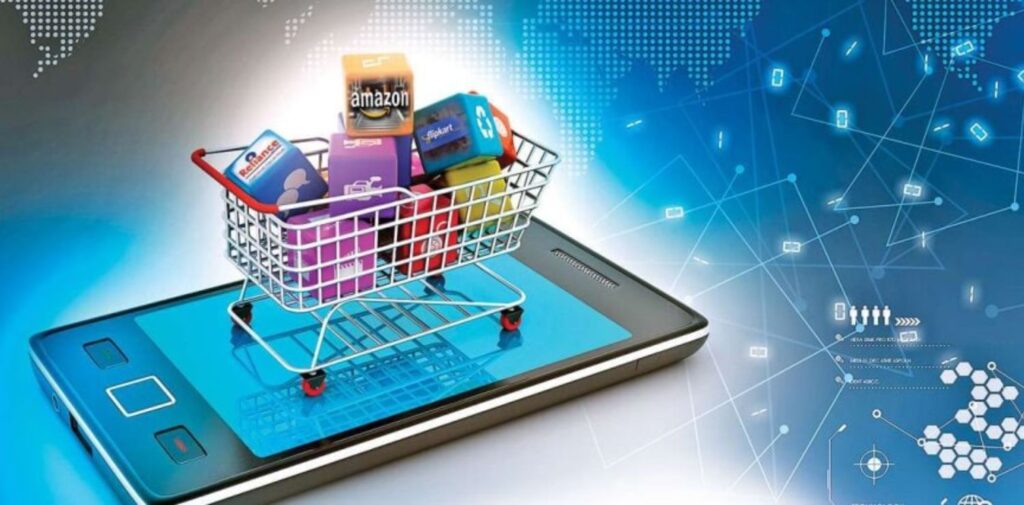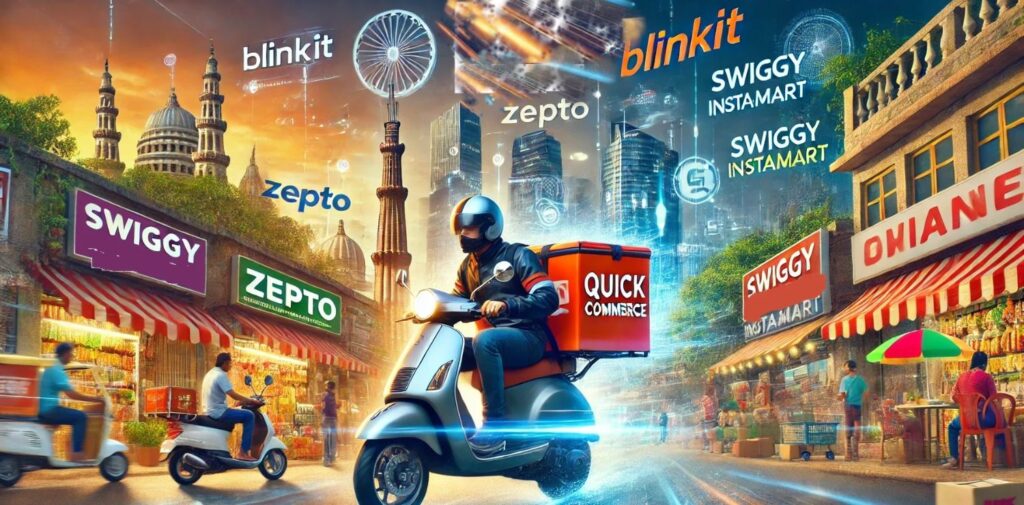In recent years, the rise of “quick commerce” has transformed the way consumers shop and businesses operate in India. With platforms like Zepto, Blinkit, Amazon, Flipkart, Myntra, and Swiggy taking the lead, the new norm of 10-Minute Delivery Revolution has become a game-changer, especially in the food and grocery sectors. What started as a niche market is rapidly growing into a multibillion-dollar industry, fundamentally reshaping the retail landscape in the country. But what does this fast-paced delivery model mean for the Indian economy? Let’s dive in.
The Surge of Quick Commerce
Quick commerce (also called q-commerce) is the practice of delivering goods to customers in under an hour, and in some cases, as quickly as 10 minutes. This model is becoming increasingly popular in urban areas, where consumers want fast access to everyday essentials like groceries, food, and medicines.
Companies such as Zepto, Blinkit (previously Grofers), and Blinkit are taking advantage of this growing demand, promising ultra-fast delivery times. Zepto, for example, promises to deliver groceries within 10 minutes, tapping into the urban customer need for speed and convenience. The quick commerce model has gained rapid traction due to India’s growing middle class, rapid urbanization, and the increasing reliance on mobile apps for all kinds of purchases.
The model relies heavily on a network of dark stores—small, local warehouses that are optimized for quick packing and dispatching of goods. These dark stores are often located in densely populated areas, enabling these companies to fulfil orders quickly, sometimes even within minutes of placing an order.

The Changing Consumer Behavior
As these quick commerce platforms expand, they are influencing Indian consumers’ shopping habits in unprecedented ways. The convenience of getting essentials delivered at lightning speed is proving to be highly attractive. What once might have taken hours or a trip to a nearby store now happens within minutes, without stepping out of the home.
Consumers are becoming accustomed to the immediacy of these services. A key factor driving this change is the pandemic, which made consumers more comfortable with online shopping and digital payments. The increasing availability of affordable smartphones and widespread internet access further accelerated this shift.
But it’s not just about groceries. The quick commerce model has extended to food delivery platforms as well. Zomato and Swiggy, two of India’s leading food delivery giants, are expanding their services to meet the 10-minute delivery trend. They’ve started experimenting with faster delivery options to compete with each other in this space. Sriharsha Majety, CEO of Swiggy, has even stated that once people get used to 10-minute deliveries, there will be no economic Impact

Boost to E-commerce and Retail Sectors
Quick commerce has led to the creation of new business opportunities and the revitalization of existing ones. By supporting local businesses with fast deliveries, platforms are providing an alternative to traditional retail models. Small grocery shops, kiranas, and restaurants now find themselves part of a new, tech-driven ecosystem that can reach customers they may not have been able to serve otherwise. According to reports, these platforms are helping increase the reach of even small retailers, giving them access to a much broader customer base.
The RK stores have also created employment opportunities, both in terms of warehouse management and delivery staff. These warehouses are typically staffed by local workers, and the demand for delivery personnel has surged as companies race to meet their 10-minute targets. India’s growing gig economy is directly benefiting from this trend.
Additionally, logistics companies and technology platforms that facilitate the operational side of quick commerce are experiencing growth. With businesses needing real-time data processing and tracking systems to manage the demand, the technology sector is also seeing significant growth. Startups and companies involved in logistics management, data analytics, and inventory control benefit from this trend.
Impact on Small Retailers
While quick commerce is bringing opportunities to many, it’s also causing some concerns for small retailers. Traditional brick-and-mortar stores and kiranas are under pressure as these online platforms take over the market with their lightning-fast delivery services. It’s a challenge for smaller shops to compete with the price advantages and convenience that Q-commerce platforms offer.
Many small businesses are finding it hard to match the discounts, delivery speed, and availability of stock provided by the larger platforms. For example, Blinkit and Zepto are backed by large investors and have the resources to offer subsidized pricing and promotions, which may prove challenging for independent grocers to replicate. As a result, there is a risk of increased market consolidation, where only the biggest players dominate, leaving smaller stores behind.
Employment Creation
One of the most immediate economic benefits of quick commerce is the increase in jobs. With the expansion of services like Blinkit and Zepto, there has been a growing demand for delivery personnel. These platforms employ thousands of riders who operate on a gig-based model. Additionally, dark stores require staff to manage inventory, pack orders, and ensure timely dispatch, creating even more jobs across the country.
However, while the rise of the gig economy presents new employment opportunities, it also raises concerns about job security and working conditions. Delivery workers, for example, often work under tight deadlines and face challenges related to fluctuating demand and inconsistent pay. There is ongoing debate about how to ensure better wages and worker rights in this fast-growing sector.
A New Wave of Investment
The quick commerce industry has attracted significant investment from both domestic and international players. Major companies like Swiggy, Zomato, and Amazon are investing heavily to build infrastructure, expand operations, and improve delivery speed. As the demand for quicker services grows, investors are betting on the future growth of the sector.
For example, Blinkit raised millions in funding to expand its network of dark stores across the country. Global players like Tiger Global and Sequoia Capital have been backing these startups to help them scale rapidly. This influx of capital is driving innovation and encouraging further competition, ensuring that consumers benefit from better services and lower prices.

Future of Quick Commerce
As we look to the future, it’s clear that the 10-minute delivery trend is likely to continue gaining ground in India. The industry is moving toward even faster services, with some companies exploring “flash return” services, which promise to reverse the delivery process within minutes. This level of s extends beyond groceries and food, impacting various other retail sectors like electronics, apparel, and personal care.
However, challenges remain. The cost of maintaining such fast delivery systems is high, and ensuring the sustainability of the business models in the long term is still an open question. Consumer demand for free and fast deliveries puts immense pressure on the companies’ profitability. Balancing customer satisfaction with operational costs will be crucial for their continued success.
Conclusion: 10-Minute Delivery Revolution
The 10-minute delivery revolution is undoubtedly changing India’s retail and e-commerce sectors, creating new opportunities for businesses, driving technological innovation, and reshaping consumer expectations. While it is benefiting consumers, small retailers, and the economy as a whole, the challenge remains in ensuring a balance between fast deliveries and sustainable business models. The coming years will be crucial in determining whether this trend can maintain its momentum while addressing the challenges it brings.




